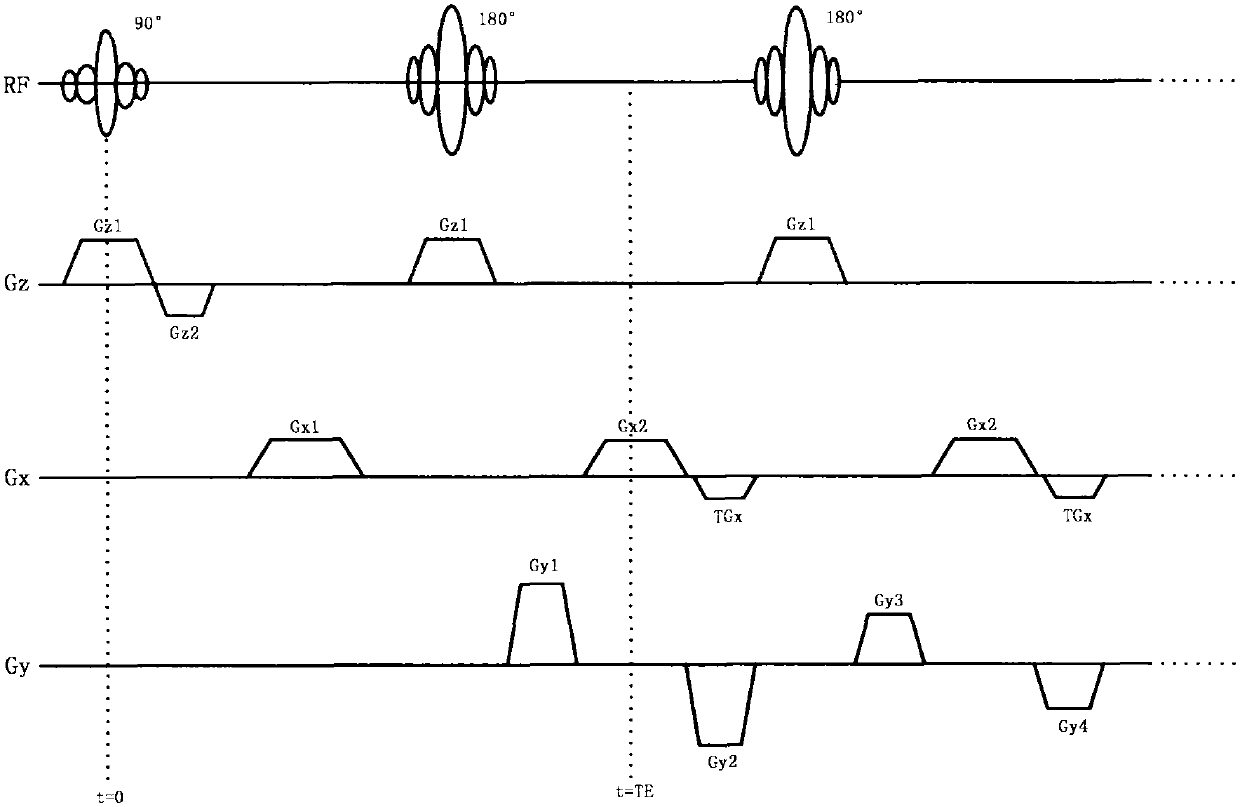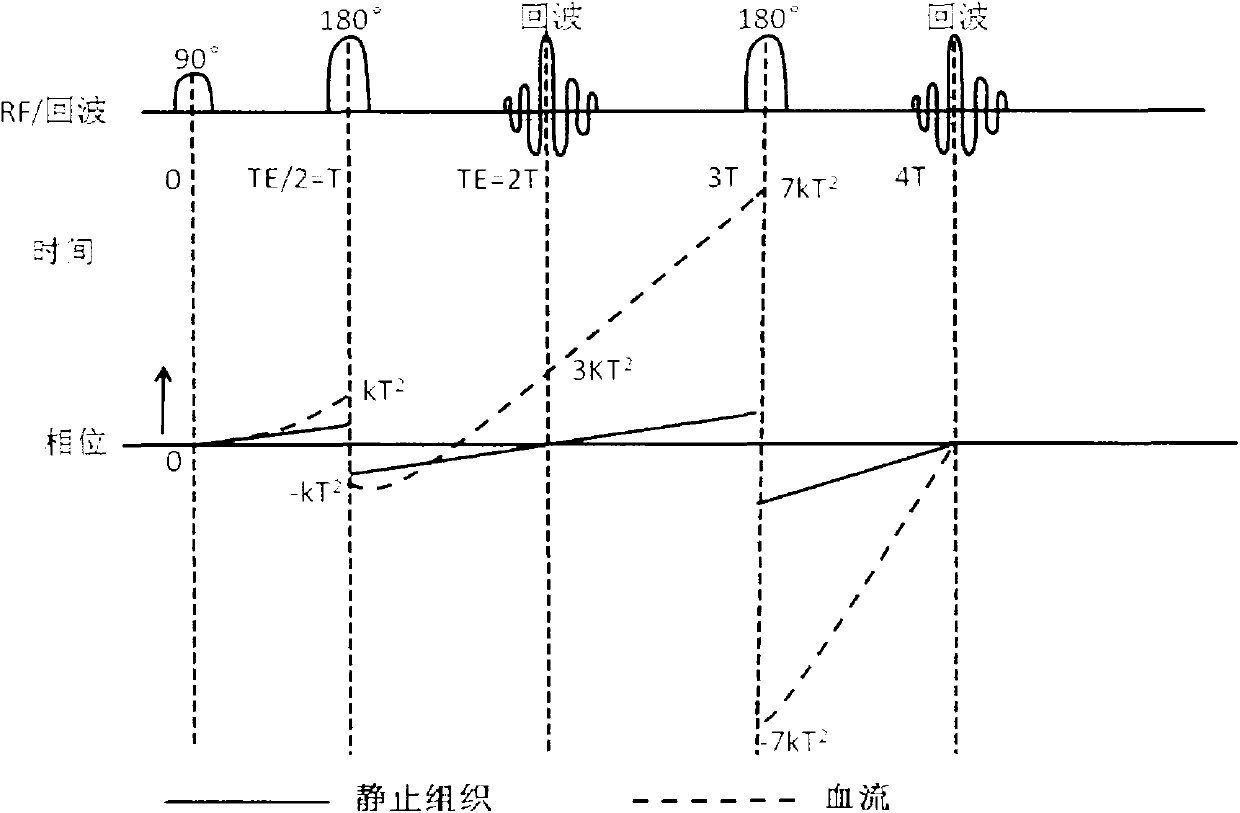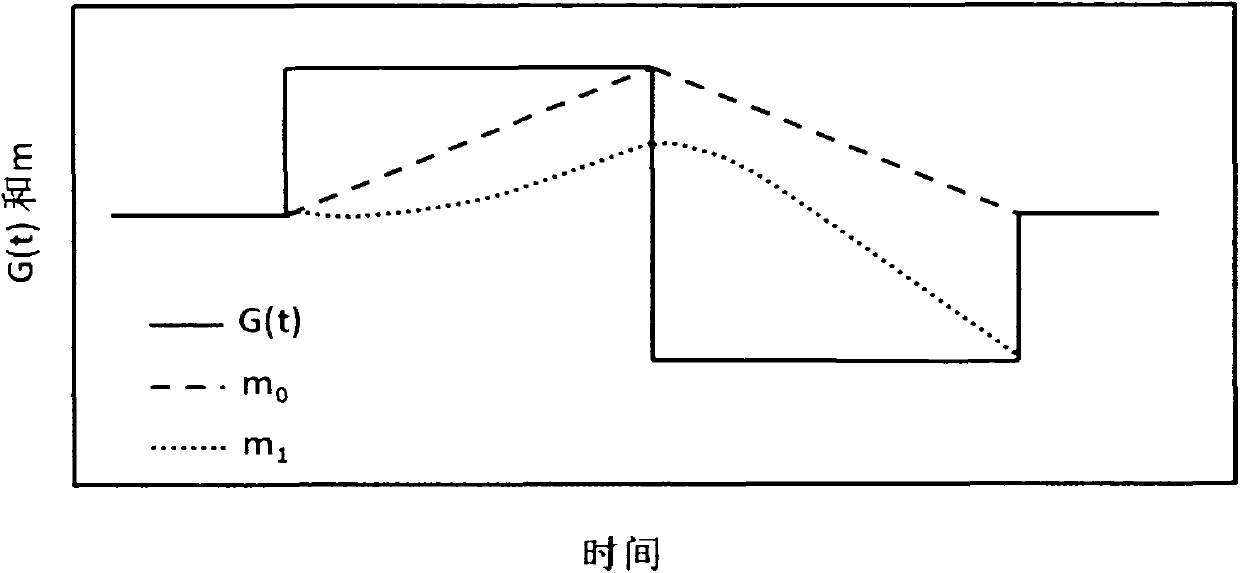A Flow Compensation Method for Magnetic Resonance Imaging System
A technology of nuclear magnetic resonance imaging and compensation method, which is applied to the measurement of magnetic variables, measurement devices, instruments, etc., can solve the problems of reduced echo signal amplitude, serious image pulsation artifacts, and image quality degradation, and achieves a reduced artifact reduction. Effect
- Summary
- Abstract
- Description
- Claims
- Application Information
AI Technical Summary
Problems solved by technology
Method used
Image
Examples
Embodiment
[0034] Taking the flow compensation in the frequency encoding direction as an example, the compensation in the layer selection direction and the phase encoding direction are the same:
[0035] (1) figure 1 is the conventional FSE imaging sequence diagram, figure 2 is the accumulated phase of stationary tissue and flowing fluid during FSE multi-echo acquisition, image 3 , Figure 4 Zeroing compensation gradient design for zero-order and first-order gradient moments, respectively.
[0036] (2) Set the initial parameters, the gradient strength G is 20mT / m, the plateau period of the compensated gradient pulse is 200μs, the gradient rise and fall length is 1ms, the data sampling time is 20μs, the number of sampling points is 256, and the dead time of the receiver is 870μs.
[0037] (3) Figure 5 For the flow compensation sequence used in the present invention, the sequence is at figure 1 On the basis of conventional FSE, three gradients G are applied between the 90° RF pulse...
PUM
 Login to View More
Login to View More Abstract
Description
Claims
Application Information
 Login to View More
Login to View More - R&D Engineer
- R&D Manager
- IP Professional
- Industry Leading Data Capabilities
- Powerful AI technology
- Patent DNA Extraction
Browse by: Latest US Patents, China's latest patents, Technical Efficacy Thesaurus, Application Domain, Technology Topic, Popular Technical Reports.
© 2024 PatSnap. All rights reserved.Legal|Privacy policy|Modern Slavery Act Transparency Statement|Sitemap|About US| Contact US: help@patsnap.com










